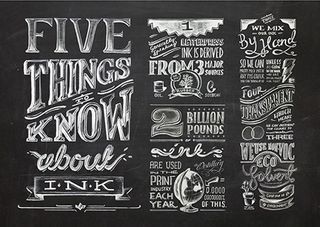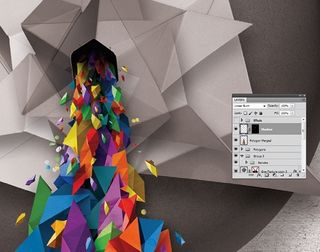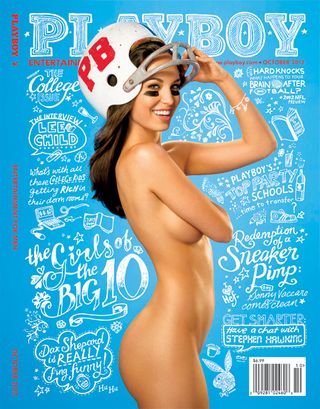20 pro tips to improve your handmade design
Rob Carney speaks to the world's top illustrators to give you essential tips to master traditional techniques for that unique handmade appeal.
Handmade design is immensely satisfying - seeing your concept come to life using tactile techniques, whether it be hand-drawn illustration, paper-cut or more, is a pure joy.
If you want to know how to begin a paper-cut project or level up your hand-drawn illustration skills, there's bound to be something here for you. So, before you embark on the work for that new killer concept, take heed of this expert advice.
01. Photograph it yourself
Casper Franken is one half of Shotopop, and firmly believes that you should photograph your set design yourself. "After all," he says, "you know the concept." He also suggests having a good first aid kit - because you will need one. It's just one of the pitfalls of using razor-sharp scalpels all day.
Casper Franken
Shotopop, www.shotopop.com
02. Plan and scan
"Spend time planning! And buy a good scanner to integrate hand-drawn elements into your signal illustrations. Drawing is time-consuming, from finding the references to doing all the Photoshop prep. If it's ambitious, the planning can easily take a week - so you need a good sketch of the finished image."
Christina Magnussen
Oh Yeah Studio, www.ohyeahstudio.no
03. Have a good starting point
"In these times of visual overload, some illustrators are paying less attention to good concepts. I think they focus more on style instead of the concept. Illustration is not just about making a beautiful image, it's about telling a story in that image - otherwise it would be called 'visualising'."
Get the Creative Bloq Newsletter
Daily design news, reviews, how-tos and more, as picked by the editors.
Merijn Hos
Illustrator, www.bfreeone.com
04. Achieve a look
"Normally I print images out, scan them, and make sure they've gone through a few processes (such as photocopying for that old-school edge) to give them the extra tactile quality that will sit with my work. Just because you work with photos or other provided imagery, you can still make it fit with your style."
Jeff Bowman
Illustrator, www.mrbowlegs.co.uk

05. Choose the right pens
"I use PITT artist pens: they're waterproof and lightfast. I used to use Pilot V-Pens, which I love drawing with, but I discovered they fade in sunlight - drawings I had in an exhibition faded to nothing in a week. Paper is different though; I'll use thin, cheap computer paper for initial sketches, or the backs of letters."
Gemma Correll
Illustrator, www.gemmacorrell.com
06. Research, research, research
"I generally start with a really terrible sketch to show roughly where text/images will go. If I need reference, I spend a good hour sourcing this from Google, stock photo libraries and books, and print out a sheet of ideas. Then I get away from the screen. I need to work with a pencil at this stage so the ideas can flow."
Kate Forrester
Illustrator and typographer, www.kateforrester.com
07. Use Photoshop to prototype
"I start by thinking about what I want to convey in an image, and list things that represent the concept. I make Photoshop mockups of the elements I want in the end piece, play around with the sizes until the composition is balanced, then recreate the mockups with real objects and photograph it."
Jessica Walsh
Multidisciplinary designer, www.jessicawalsh.com
08. Design, print, reverse, fit
"Sometimes when creating a papercut illustration, it's hard to compose the piece as you go and ensure the elements are the right size and shape. So I sometimes design sections of my papercuts on the computer, and print them out reversed onto the back of coloured paper; then I know they'll fit together."
Owen Gildersleeve
Designer and illustrator, www.eveningtweed.com
09. Tell clients your needs
"Don't be afraid to let the clients know if you have any 'special circumstances'. For instance, I get distracted by phone calls and I can't pick up the phone when I'm busy gluing papers, so I often ask clients to communicate with me via emails only. Usually they're absolutely fine with that."
Yulia Brodskaya
Papercraft illustrator, www.artyulia.com
10. Get the right paper
"I absolutely love art material shops; working with good materials is very important. I use a smooth 150gsm cartridge paper to draw on, as ink tends to bleed on cheap lightweight paper. I find that textured paper affects the smoothness of the drawn line and doesn't scan as well."
Sam Piyasena
Billie Jean, www.billiejean.co.uk

11. Don't get lazy
"I constantly try to keep things moving on, so I look at my last piece of work, see how different elements work together and try to develop it. The last thing you want is a repeat of the same elements in every work, to the extent it makes it boring. I think having a recognisable style in your work is OK, but it's all about keeping things fresh."
Jeff Bowman
Illustrator, www.mrbowlegs.co.uk
12. Don't forget about yourself
"One thing I'm guilty of is not making time to do personal work - it's the best way to explore a fresh, new direction and the sort of images you want to create. Once you start making images for yourself, you have original material, and art directors will start commissioning you to make the work you want to do."
Kate Forrester
Illustrator and typographer, www.kateforrester.com
13. Don't think one-dimensionally
"I find that many illustrators think very one-dimensionally about the medium of illustration. There's definitely a need to explore different techniques and effects, be it digitally or through a more traditional medium that's imported and manipulated - you never know what you might discover."
Casper Franken
Shotopop, www.shotopop.com
14. Don't fake it
"With handmade illustration I always get frustrated if it's been faked in some way, or if the piece has been manipulated on a computer to look handmade. The joy of making work by hand is that it's not totally neat, and has visible flaws. Fully embrace this, and use these handmade qualities to your advantage."
Owen Gildersleeve
Designer and illustrator, www.eveningtweed.com
15. Don't accept too little
"It's better not to accept a fee on the phone, especially when discussing advertising projects. I usually ask clients to send me all the details by email first, so that I have enough time to quickly do a little research, and think the project concept through before getting back to them with a considered quote."
Yulia Brodskaya
Papercraft illustrator, www.artyulia.com

16. Don't rely on software
"Thanks to some incredible technological advances, illustrators have been given a bewildering range of possibilities to work with. In my opinion, this has led to legions of software-savvy illustrators who can't draw. Absolutely anyone can learn to use a software program, but not everyone can draw."
Sam Piyasena
Billie Jean, www.billiejean.co.uk
17. Don't follow the crowd
"The rise in hand-drawn and handmade illustration is linked to the need to create something different in challenging economic times. The need for a certain style is important when you really have to differentiate yourself from all the others to get that client to come to you. Don't be boring!"
Christina Magnussen
Oh Yeah Studio, www.ohyeahstudio.no
18. Don't rely on style
"You should enjoy the way in which you work. If an image looks pretty, but has no real meaning behind it, the project can end up being a bit boring. Work in the way that you feel is most comfortable. There's no point working in a style that you don't enjoy - it always shows in your illustrations."
Gemma Correll
Illustrator, www.gemmacorrell.com
19. Don't forget the process
"Know your workflow. Mine is: read the brief, write down ideas, work some out in a sketch, then discuss the comps with the client. Next design one idea in a style that suits the illustration, get the client feedback, make adjustments, get more client feedback, make more adjustments, and there's the finished piece."
Merijn Hos
Illustrator, www.bfreeone.com
20. Don't ruin it with a bad palette
"I'm not sure there are any real mistakes in illustrations, like the way an accountant can make a mistake - like all art, the result is subjective. But I'd say many illustrations that have great technique or style are often ruined by a bad colour palette." The moral? Choose your colours wisely.
Jessica Walsh
Multidisciplinary designer, www.jessicawalsh.com
Do you have any hand-drawn illustration tips? Don't keep them to yourself - share them in the comments below!
Words: Rob Carney Main image: Yusuke Oono

Thank you for reading 5 articles this month* Join now for unlimited access
Enjoy your first month for just £1 / $1 / €1
*Read 5 free articles per month without a subscription

Join now for unlimited access
Try first month for just £1 / $1 / €1
The Creative Bloq team is made up of a group of design fans, and has changed and evolved since Creative Bloq began back in 2012. The current website team consists of eight full-time members of staff: Editor Georgia Coggan, Deputy Editor Rosie Hilder, Ecommerce Editor Beren Neale, Senior News Editor Daniel Piper, Editor, Digital Art and 3D Ian Dean, Tech Reviews Editor Erlingur Einarsson and Ecommerce Writer Beth Nicholls and Staff Writer Natalie Fear, as well as a roster of freelancers from around the world. The 3D World and ImagineFX magazine teams also pitch in, ensuring that content from 3D World and ImagineFX is represented on Creative Bloq.
